What the largest sex-furniture manufacturer in the US can teach America about trade
As US president Donald Trump swanned through the fighter jets, Stetson hats, and baseball bats at the White House’s Made in America event in July, one product was absent from the display of patriotic American-made goods: Liberator-brand sex furniture.


As US president Donald Trump swanned through the fighter jets, Stetson hats, and baseball bats at the White House’s Made in America event in July, one product was absent from the display of patriotic American-made goods: Liberator-brand sex furniture.
Perhaps it would be asking too much for the Trump administration to tout a company that produces crimson foam wedges, chaises, and other furniture pieces that help couples have more pleasurable sex. But Luvu brands, the company that manufactures Liberator furniture, can teach America a lot about trade.
One of Trump’s campaign promises was keeping manufacturing in the US and bringing back factory jobs through bilateral trade policy. So far his policies have helped increased employment in manufacturing. However, GM recently announced that they would cut nearly 15,000 jobs and close three car plants, and the Administration’s tariffs on everything from Chinese-made washing machines to Canadian steel will actually hurt American companies, according to most economists.
If tariffs aren’t the answer, then what is? Luvu could provide a model for how industry and American jobs can be brought back to the US.
Keep your supply chain local
On the outskirts of Atlanta, Georgia, Luvu has been mass producing sex furniture under the brand name Liberator for 15 years. It employs nearly 200 full-timers in its 140,000 square foot factory, where it produces “bedroom adventure gear” more cheaply than it could abroad. (They have recently expanded into children’s and casual furniture, like bean bags, too.)
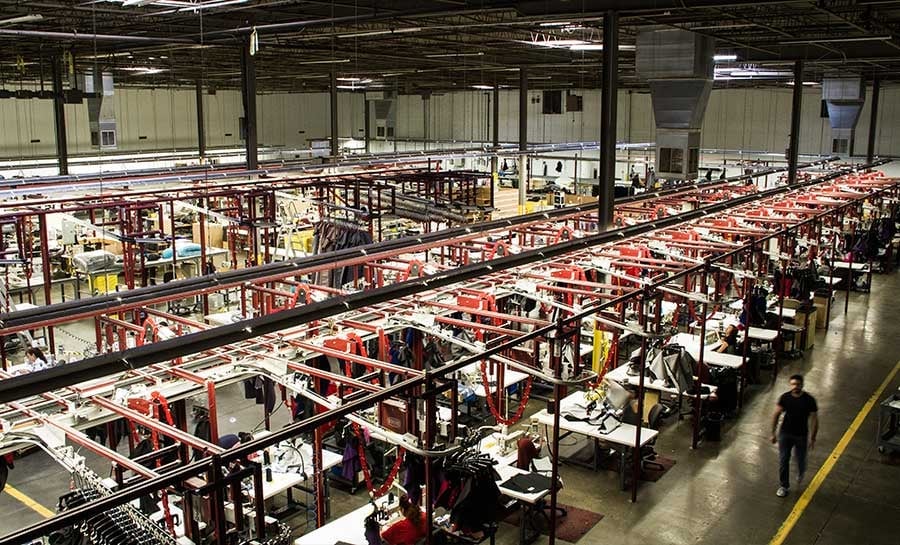
When Luvu brands founder and CEO Louis Friedman started Liberator, “I was 100% committed to sourcing from US manufacturers, because most sewn goods have left the US,” he says. About 97% of apparel bought in the US is produced overseas, as well as nearly half of textiles.
Not all the materials in Liberator furniture can be sourced from American companies, but many of them are American-made. Most of Liberator’s fabric covers are constructed from a patented nylon and cotton blend produced in the New England area, which has interlocking threads that allow the pieces to stick together like Velcro. The foam used in their products is also from local Georgia suppliers.

They also reduce costs by making sure none of those materials go to waste, not even the leftover cuts that don’t make their way into the furniture. “It’s impossible to get a 100% yield from foam, so we used to send the waste stream to the carpet industry [for] carpet backing,” Friedman says.
But then the 2008 recession hit, and the carpet industry wasn’t as interested in buying. They had 25,000 square feet of waste piled up to the ceiling, and they didn’t know what to do with it. So they decided to start a new (non-adult) brand, Jaxx Casual Living, to produce bean bags and pool floats using the leftover polyurethane foam.
Now Jaxx has become so big that they also acquire polyurethane foam packaging scraps from other local furniture manufacturers, then shred and use it to fill their furniture pieces. This means that not only are they supporting other local businesses—they’re helping out the environment, too. “[Polyurethane foam] is not very environmental, it doesn’t break down,” says Angela Lieben, director of marketing and PR for Luvu brands. “So what we try to do is to prevent this stuff from getting into a landfill.”
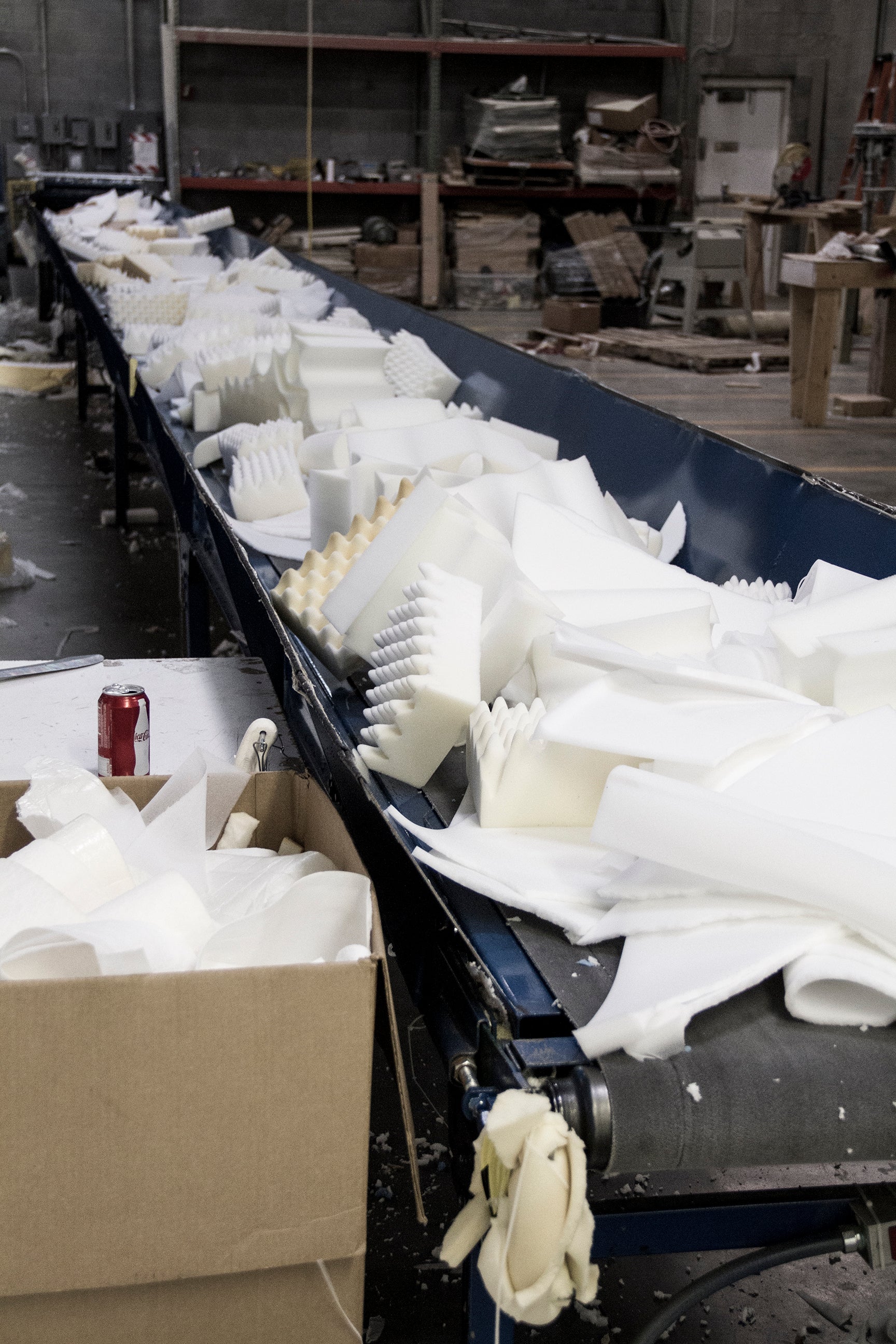
Although buying local and recycling materials are strategies more commonly associated with hipster Brooklyn microbreweries than international brands, Luvu shows that these strategies can be profitable business moves. Turning other companies’ scrap materials into profit is the kind of innovation that Trump could promote to help keep manufacturing in the US. If reusing materials were re-branded as a financial choice and not an ethical one, more American companies might get behind it.
But there’s another obstacle: Producing products in America means hiring American workers, and they don’t come cheap.
Pay workers well
One of the biggest barriers to manufacturing in the US is the cost of labor. For producers, it can feel like there is no way to produce a product in the America as cheaply as they could in, say, Bangladesh, where workers average around 59 cents an hour. Even in China, where wages are increasing, the average factory worker still only earns about the equivalent of $3.70 an hour, which is around half of the US minimum wage.
But Liberator pays their sewing artisans and machine operators $12 to $13 an hour, over three times the amount they would have to pay in China. Their factory employees also receive stock options. How can they afford it?
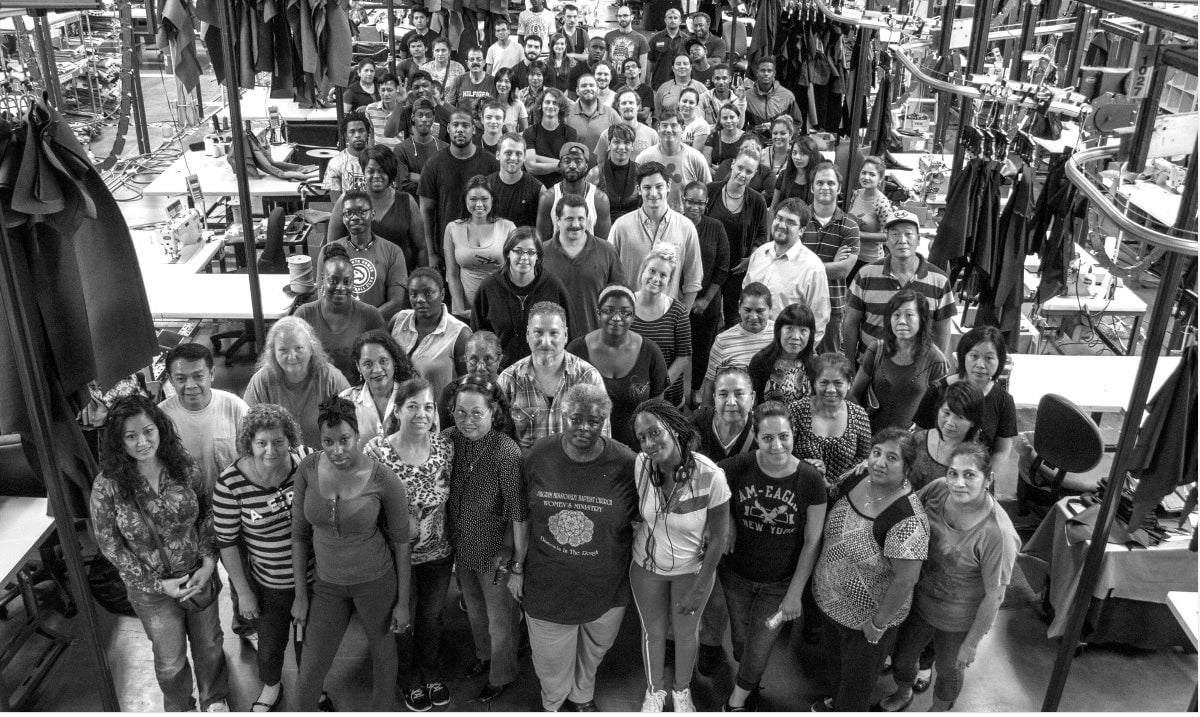
Counterintuitively, Liberator is able to keep labor costs down by paying employees well and offering full-time work almost exclusively; 98% of its employees are full time. There is very little turnover among workers—many have been with Luvu for more than 15 years—which lowers costs as workers don’t have to be retrained.
About a third of their workers are immigrants, while many others are inexperienced ex-addicts who are coming out of drug rehabilitation programs. They send these new employees to an in-house sewing school so they can be trained to work with Liberator fabrics and to use the Computer-Aided Design (CAD) machines, which are machines that can be programmed to cut fabrics into any shape.
If they moved their manufacturing to China, their employees would have to be constantly re-trained in working with their specific fabrics and machines, and turnover would be much higher. Quality would also suffer because, according to Friedman, many fabric factories in China aren’t equipped with CAD machines, so cloth would have to be cut by hand with a large knife, making the pieces uneven. “You typically don’t get [the same quality] when you farm your work out to a factory,” he says.
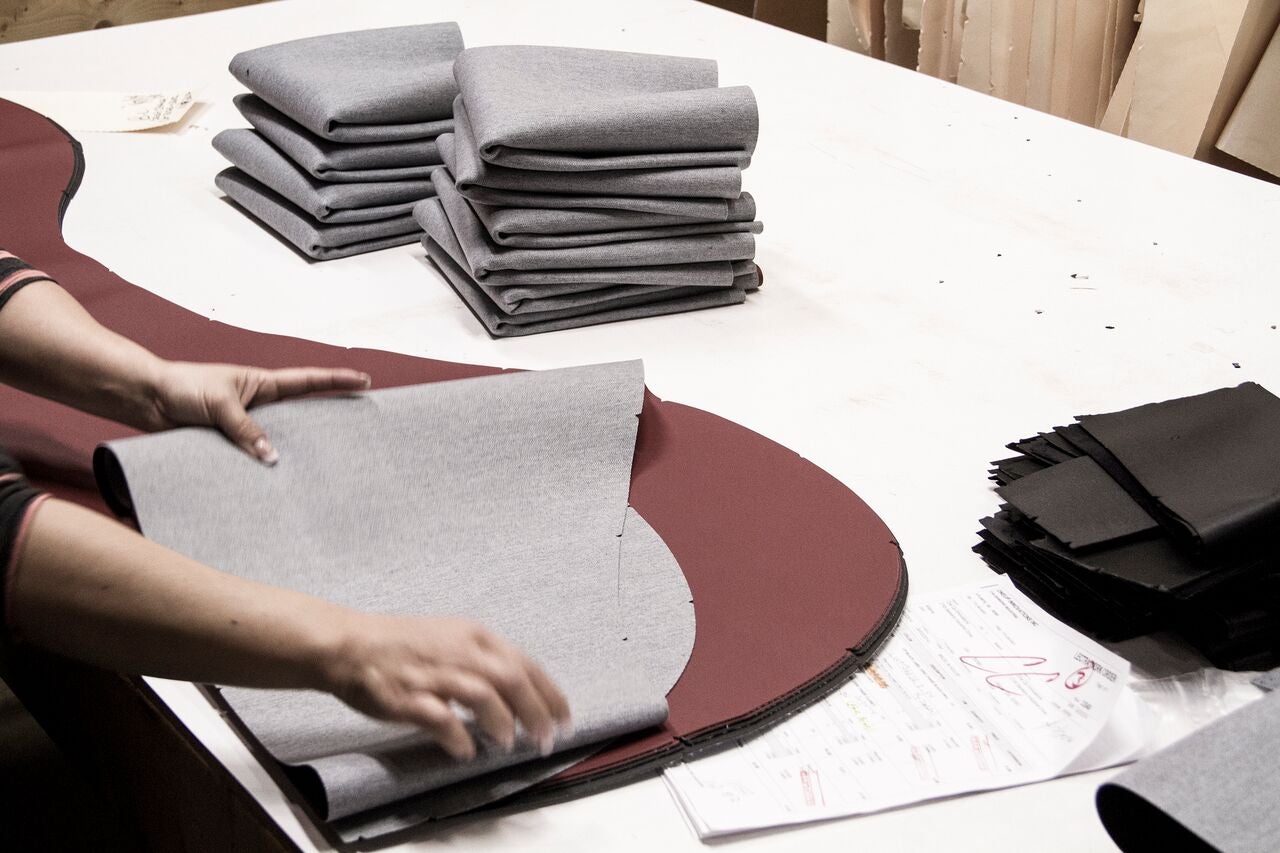
Even if Luvu brands did manage to find a factory with CAD machines and fairly low turnover, the company still might not save money, because while labor would be much cheaper, shipping costs would be higher. Liberator’s products are bulky and heavy: Their polyurethane foam sex chaises are five and a half feet long, and nearly two feet wide, while their Zeppelin bean bag meant to accommodate three to four people weighs 400 pounds. Any money they might be able to save in overseas manufacturing they would lose in shipping back to America, which is their largest market.
But creating a high-quality product means that you have to sell it at a higher price. This leads to the next lesson on how to keep manufacturing in the US.
Consumers will pay more for well-made specialty products
Trade wars are usually seen as a race to the bottom—whichever company can produce the product for the cheapest amount wins. But Luvu points to another way: be the first to market, or be the best.
Liberator created the market for foam-based “assistive accessories” for sex. Because they basically invented this category, they were able to set a fairly high price. Prices range from $59 for a cloth-covered small foam wedge to $950 for a faux lambskin-covered foam chaise with maple feet. One of their most popular products it the $240 foam wedge/ramp combo covered in their patented microfiber cloth. People will pay these prices because they know they’re getting top quality, American-made goods.
Liberator also commands a higher price because they’ve crafted a strong brand. Their wedges have been featured in mainstream movies like Meet the Fockers, and ads have appeared everywhere from Men’s Fitness to Rolling Stone. Liberator products show that companies can piggy-back on one of America’s best exports—pop culture—to add value and cache for a worldwide audience.
Getting horizontal with vertical integration
Nearly every part of Liberator’s design, marketing, and production takes place in its factory. Furniture designers draft ideas that take customer feedback into account, and after prototypes are produced, workers take them home for a spin, and come back offering further refinements. There’s even an in-house photo studio for advertisements.
“The nice thing about manufacturing in the US is speed to market and the ability to test products without doing a large commitment,” Friedman says. “We can conceive a product, design it, and get it to market in a couple of weeks.”
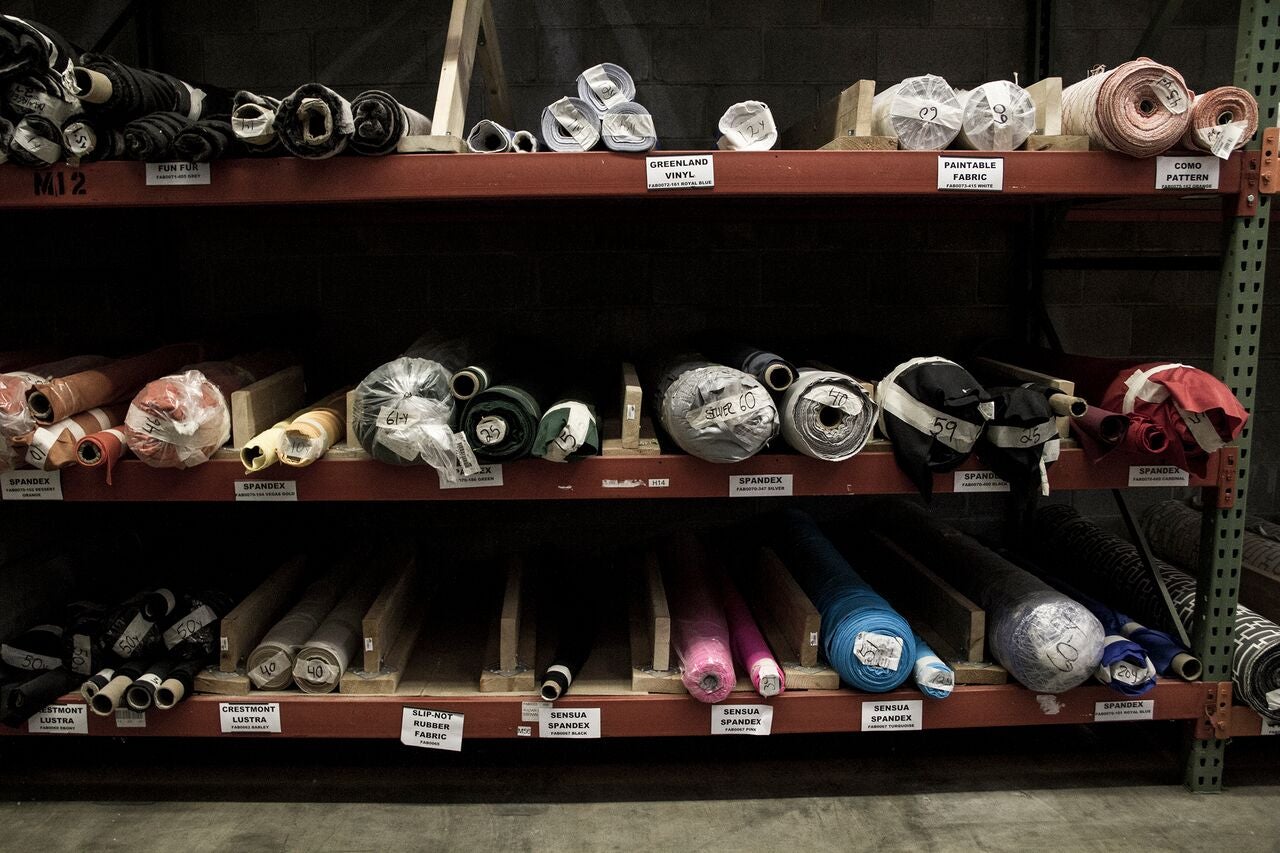
Once the furniture design is finalized, fabric covers are cut with the CAD machines and sent to worker stations on specially designed conveyer machines that hang from the scaffolding. Each worker does a specialized task: one person sews in the seam, then sends the fabric down the line, where another person puts in the zipper, and like that the cover continues to be shuttled from worker to worker until it is finished.
Then there’s the foam, which comes to the factory in giant blocks. Each piece is cut to specifications and then stuffed into a ballistic nylon liner. After stores complained that they didn’t want to carry Liberator products because they took up too much shelf space, they decided to begin vacuum compressing the finished pieces using a machine developed by the company. This machine allows the irregularly shaped products to be rolled into cylindrical forms that reduced the size of the packaging by 70%.
Then the boxes are assembled, the furniture squeezed into them, and the packages sent out on trucks directly to consumers or to outlets, including Amazon and Target. In addition to their US sales, Luvu sells their sex furniture internationally in 16 countries, including Germany and China.
Luvu isn’t the only vertically integrated company succeeding. Other companies including Kaiser Permanente, CVS-Aetna, and Tesla have also used this organizational strategy.
Bringing sexy back
Not every company can operate like Luvu brands does. It is fairly small, after all, with $17 million in yearly sales and 170 employees. Yet there are important lessons that can be learned from the company’s practices. The biggest one? Manufacturing in the US, even textile manufacturing, can be both cheaper and more ethical than manufacturing overseas.
A sex-furniture factory may not be what most people have in mind when they think about bringing industry back to the US, but it’s these kind of specialty companies that are managing to put the passion back into for American manufacturing.